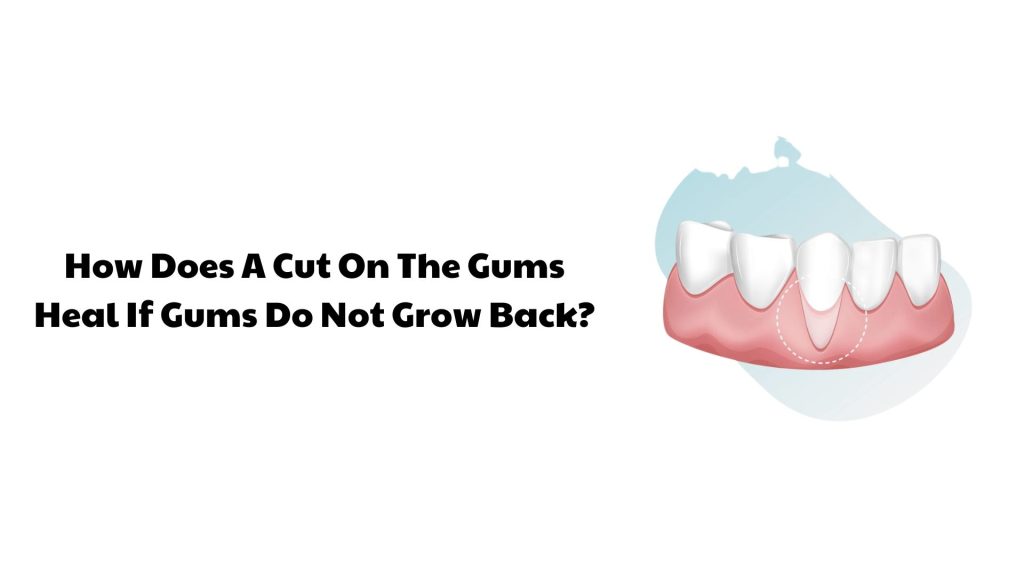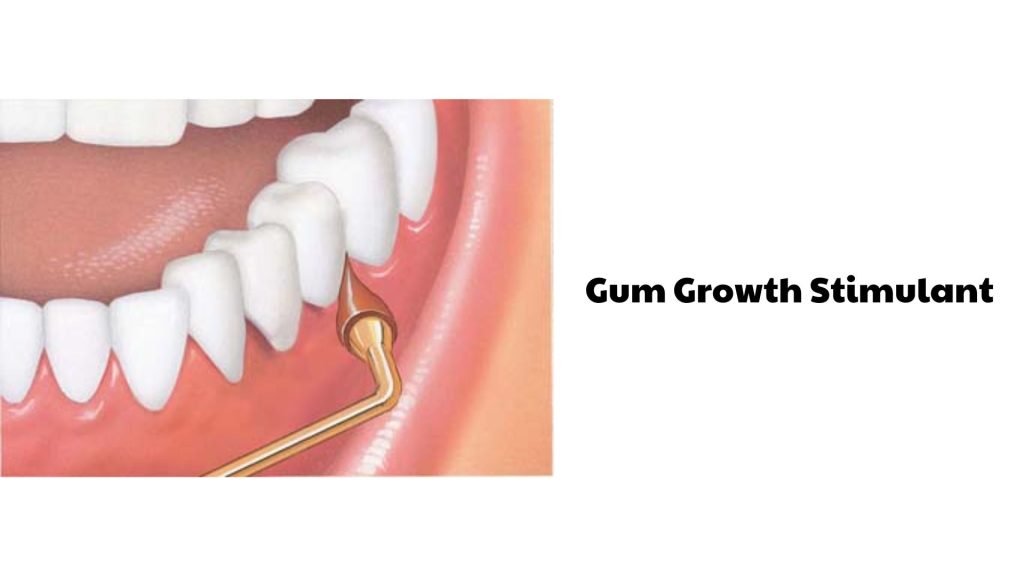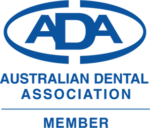How does a cut on the gums heal if gums do not grow back? Gums don’t renew like other tissues, therefore healing a gum wound includes tissue repair. Oral health is important, and occasionally we need to know how gums recover after being harmed. Cutting gums raises problems regarding the healing process since they don’t grow back like other tissues. In this investigation, we’ll learn how the body heals gum cuts and how scar tissue plays a role. Let’s explore oral health and how gum cuts heal when gums don’t come back.
Why Do Cuts On The Gums Heal If They Don’t Grow Back?

Understanding why a gum cut might not heal on its own is a crucial part of taking care of your teeth. While gums can heal and grow back, they don’t usually do it as quickly as skin or other body parts. Lack of gum growth is a normal response to damage. When we have a wound, gum tissue forms a barrier to prevent infection and inflammation. This is why the gums often “shrink” to protect the wounded area and may not come back normally.
To explain why gum injuries so seldom heal, consider the following:
Severe Gum Tissue Damage
Gum tissue regenerates and recovers slowly, and its rate of regeneration is often significantly slower than that of other areas of the body. If the cut severely damages gum tissue, it may forever change. When the gum tissue lacks sufficient natural resources to renew, regeneration becomes difficult.
Furthermore, the speed and capacity to rebuild gum tissue are affected by hereditary variables as well as each individual’s health situation.
Improper Post-Injury Care
If you want your gum tissue to recover properly after a gingival cut, you need to take good care of it. Failure to follow your dentist’s recommendations and incorrect wound care adversely impair gum tissue regeneration. The importance of making follow-up appointments cannot be overstated. The dentist will inspect the area to ensure the growth is robust and healthy.
How Does A Cut On The Gums Heal If Gums Do Not Grow Back?

Do you know how long cut gums take to heal? After a gingivectomy without sutures, recovery takes 2 weeks. If you have a cut in your gums and it doesn’t heal, try not to stress yourself too much. This is a frequent issue, but there are many solutions to get you back to smiling freely and feeling strong again. In the following, we’ll examine the proper way to clean and bandage this wound:
Laser Therapy
Laser Therapy affects the cut area by applying concentrated, high-frequency light. This laser light may be adjusted to suit the state of the cut and surrounding gums. Inflammation is lowered, bleeding stops, and new gum tissue grows faster with laser treatment:
Advantages | Disadvantages |
|
|
Dental Treatment
There is no reason to be concerned if you have a cut on your gums and your gums do not heal. The dentistry sector has several treatments to assist you in overcoming this disease and restoring your gums’ health. Here are some examples of dental treatments:
- Grafting: This procedure covers the wounded region with gum tissue from another location of the mouth or synthetic gum tissue. Damaged gum tissue is rebuilt through gum grafting to protect and heal.
- Tissue graft from another source (Allograft): When the gums are unable to regenerate new tissue from the body or are badly injured, gum tissue from another source, generally a donor, may be utilized to replace them.
- Gingival Flap Surgery: Lifting a bit of the gum around the injured region and putting it over the wound creates new gum tissue. It protects and promotes gum development.
The right medicine for you will depend on your situation and what your dentist tells you. To make sure that the recovery process is safe and successful, it is important to get professional help and stick to the treatment plan.
Gum Growth Stimulant
Thymosin beta-4 and PDGF (platelet-derived growth factor) are gum growth stimulants that increase gum tissue cell proliferation. This drug stimulates gum cells to build new tissue when given directly to the affected region, speeding healing and gum growth. 
However, a dentist should prescribe gum growth stimulants, and the patient’s health and requirements will determine the drug.
What To Do If Cut Gum Doesn’t Grow Back?
If you take good care of cuts on your gums, they can heal on their own. However, deep or severe cuts may prevent gum growth. Looking after the gums and keeping the cut in good shape is important in this case. To help gum cuts heal, try these things:
Care For Cuts
If lips don’t come back after being sliced, there are many critical actions to do. First, rinse your mouth with warm salt water or physiological saline solution after meals and before bed to clean the wound every day. For cuts, this promotes quicker healing and reduces the risk of infection. To prevent illness and germs, use an antibacterial mouthwash in addition to washing. Check the temperature of the food and beverages to ensure that the cutting area is pleasant.
Also, brush and floss carefully over the cut area to keep it clean. Keep an eye on the cut area at all times, and if you see any swelling or infection, visit a dentist straight once for assistance and treatment.
Avoid Bothersome Habits And Foods
When the gums do not regenerate, avoiding irritating foods and practices is an essential component of caring for the wounded region. Avoiding hot or cold meals and beverages, which might irritate the wound, is particularly crucial. Also, restrict hot spicy meals, strong spices, and alcohol to minimize injury and slow wound healing. Additionally, avoiding pen chewing, nail biting, and tooth-clicking may reduce gum strain and discomfort. Also, don’t eat too many hard foods or foods that need to be rubbed against the cut a lot, like coffee beans. This will keep the cut from getting infected and hurt. To avoid damaging the cut and gums, use a soft toothbrush and brush softly.
For a healthy, confident smile, Spring Orchid Dental Clinic understands the need for post-treatment maintenance. We give high-quality dental check-up treatments to check your condition following treatment. Our dentist will check the gum cut to ensure normal regrowth. You will learn how to care for the wound at home and how to recover your gums.
Stop by to hear about our regular services and how we can keep your smile healthy and attractive!
FAQs
Do Your Gums Grow Back?
Yes, they are. The intricate process of regrowing gum tissue after destruction involves fundamental phases. The gums may expand and cease bleeding after a cut. The body’s natural reaction to harm. New gum adhesion protects the wounded region from germs and irritants. These first stages are followed by gum healing. To protect the wound, gum tissue regenerates and forms a new adhesion. Regrowth begins with gum cells surrounding the injured region. These cells become gum cells and cover the wound with gum.
This technique takes time and attention. This procedure may be monitored and aftercare advised by your dentist to guarantee gum regeneration. Gingival growth stimulants or gum transplants may help gum tissue recover in certain circumstances. Gum recovery after injury depends on each person’s health and the extent of damage, thus specialized supervision is essential.
Does Cut On The Gums Heal Depend On Health?
How quickly gum tissue grows back after damage depends a lot on how healthy a person is in general. A robust and healthy body can frequently rebuild gum tissue more successfully. Nutrition is crucial, and eating a good diet and getting enough nutrients will help encourage gum regeneration. Unfortunately, the psychological state also matters. Stress and worry may impair gum regeneration by affecting the immune system.
Also, a weak immune system can slow or mess up the healing process. Additionally, general pathology and immunological state also play significant roles. Diabetes and immunological disorders might hinder gum regeneration. Finally, gum regeneration slows with age. A reduction in cell renewal may slow gum development.
What Factors Affect The Ability Of Gums To Regrow?
Gum regeneration after injury is complicated and relies on numerous variables. Initial injury severity matters. More gums regenerate after mild injuries than major ones. Natural regrowth may be restricted in extreme situations. The cut site impacts regrowth. Gums at the front of the mouth regrow better than those in the rear or inside. Regrowth depends on the patient’s health. Better health often means more resistance and a better chance of getting gums to grow back. Gum regeneration slows with age. A reduction in cell renewal may slow gum development. Post-wound care and dental instructions are crucial. Keep the wound clean and prevent irritants for optimal regeneration.





